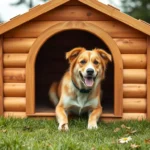
I. Introduction
A. Importance of Training
Training your dog is essential for fostering a strong bond between you and your furry friend. Not only does training improve obedience, but it also provides mental stimulation and physical exercise. Engaging your dog in training can lead to a happier, healthier pet and a more enjoyable experience for both of you. Fun tricks, such as crawling, serve as a wonderful way to enhance your dog’s skill set while providing entertainment.
B. Focus on Crawling
Crawling is a charming and engaging trick that showcases your dog’s agility and flexibility. This trick involves your dog lowering its body and moving forward on its belly, which is not only a fun performance to watch but also serves as a great exercise for your pet. Teaching your dog to crawl involves a combination of patience, positive reinforcement, and understanding of your dog’s behavior.
II. Understanding Your Dog’s Behavior
A. Canine Body Language
Understanding your dog’s body language is crucial when embarking on any training journey. Dogs communicate through various signals such as tail wagging, ear positioning, and overall body posture. Being attuned to these signals can help you recognize when your dog is stressed or confused, allowing you to adjust your training methods accordingly.
B. Dog’s Age and Physical Condition
When teaching tricks, it’s important to consider your dog’s age and physical condition. Puppies are generally more energetic and eager to learn new tricks, while older dogs may require more gentle encouragement. Additionally, certain breeds may have physical limitations that could make crawling more challenging. Always be mindful of your dog’s health and comfort during training sessions.
III. Preparing for Training
A. Ideal Training Environment
Creating a conducive training environment is essential for successful learning. Choose a quiet, distraction-free area where your dog can focus. Make sure the surface is safe for your dog to practice crawling; a soft carpet or grassy area is ideal. Establishing a safe space will help your dog feel more comfortable and engaged during training.
B. Required Tools and Treats
To teach your dog to crawl effectively, you will need some essential tools:
- Treats: Use high-value treats that your dog loves to keep them motivated.
- Clicker: A clicker can help mark desired behaviors effectively.
- Leash: A leash can help control your dog’s movements during training.
Utilizing positive reinforcement is crucial. Whenever your dog performs the desired action, reward them immediately with treats or praise to reinforce the behavior.
IV. Step-by-Step Guide to Teaching Your Dog to Crawl
A. Step 1: Get Your Dog’s Attention
Begin by ensuring your dog is focused on you. You can achieve this by calling their name or using a favorite toy. Maintain a calm demeanor, as your energy will influence your dog’s focus and enthusiasm for training.
B. Step 2: Introduce the Command
Choose a command word that you will consistently use for this trick, such as “crawl.” For example, you might say, “Crawl!” while demonstrating the action yourself. Your dog will begin to associate the command with the action through your demonstration.
C. Step 3: Use Treats to Encourage Movement
To encourage your dog to crawl, use treats to guide their movement. Start by having your dog in a sitting position, then hold a treat close to the ground in front of them. As they reach for the treat, they may instinctively lower their body. If they start to crawl, reward them immediately.
D. Step 4: Gradually Increase Distance
Once your dog begins to understand the command, gradually increase the distance they need to crawl to reach the treat. Start with short distances to build confidence, and then slowly extend the length as your dog becomes more comfortable with the action. Patience is key here; every dog learns at their own pace.
E. Step 5: Reinforce and Celebrate
Always remember to celebrate small victories. Use enthusiastic praise and additional treats whenever your dog successfully crawls. This positive reinforcement will encourage them to repeat the behavior. The joy of learning is amplified when it’s celebrated!
V. Troubleshooting Common Challenges
A. Lack of Interest or Motivation
If your dog seems uninterested or unmotivated, consider changing the treats you are using or the environment in which you are training. Sometimes, a new flavor or a different location can rekindle their enthusiasm.
B. Confusion with Other Commands
If your dog begins to mix up commands, it’s essential to clarify your expectations. Use consistent verbal cues and hand signals for each command to avoid confusion. Practicing commands in isolation before combining them can also help your dog understand what you want.
C. Physical Limitations
For dogs with mobility issues, adapt your training to suit their physical capabilities. If crawling is too strenuous, consider modifying the trick to a less demanding version or focusing on other tricks that are more comfortable for them.
VI. Advanced Techniques
A. Adding Variations to the Crawl Command
Once your dog has mastered the basic crawl, you can introduce variations. Teach them to crawl in different directions or to crawl under obstacles. This not only makes the trick more challenging but also enhances your dog’s agility and confidence.
B. Incorporating Crawling into a Routine
Incorporating crawling into your dog’s daily routine can be a fun way to keep them engaged. Use it as part of a warm-up before other exercises or games, turning it into a playful bonding experience.
VII. The Importance of Consistency and Patience
A. Setting a Regular Training Schedule
Having a regular training schedule is critical for optimal results. Aim for short, consistent training sessions daily, as frequent practice helps reinforce the behavior.
B. Understanding Learning Curves
Recognize that every dog learns at their own pace. Some may grasp the trick quickly, while others may take longer. Understanding and respecting your dog’s learning curve will help maintain a positive training atmosphere.
VIII. Conclusion
A. Recap of Key Points
Teaching your dog to crawl is a rewarding experience that enhances your bond and provides mental stimulation. Remember the steps: get your dog’s attention, introduce the command, use treats for encouragement, gradually increase the distance, and reinforce with praise. Patience is paramount throughout the process.
B. Encouragement for Continued Training
Keep the momentum going! The skills you teach your dog can extend beyond crawling. Continue exploring new tricks and commands to keep your training sessions fresh and exciting. Your dog will thrive on the mental exercise and the bond you share.
C. Invitation to Share Experiences
Training can be a journey filled with challenges and triumphs. Sharing your experiences—whether successes or obstacles—can inspire others and create a community of dog lovers eager to support each other.
IX. Additional Resources
A. Recommended Books and Websites
Explore books and online resources dedicated to dog training for further tips and techniques that can assist you in your training endeavors.
B. Professional Training Options
If you encounter challenges that seem insurmountable, consider enlisting a professional dog trainer. They can provide personalized guidance tailored to your dog’s unique needs and behavior.
By following these guidelines, you’ll be well-equipped to teach your dog to crawl and enjoy the many benefits of training together!









